KBP weapons for wars of new type
Military experts from the leading armies of the world unanimously note the changing nature of modern wars. The epoch of military conflicts with the use of numerous armies, solid fronts, long-term positional defense, breakthroughs of large mobile units in depth - a thing of the past at the end of the 20th century. Reducing the likelihood of unleashing large-scale wars is determined primarily by the removal of ideological confrontation and reduction of the threat of the use of weapons of mass destruction. On the other hand, new forms and methods of achieving political and strategic goals are widely used: political, economic, informational pressure, the creation of interethnic and interfaith tensions and, as the “last argument of the kings”, use of compact high-tech military groups in order to defeat the enemy deadlines.
Fight against irregular formations
Historical events at the turn of the XX-XXI centuries show significant changes in the methods, forms and methods of warfare. Armed conflicts of low and medium intensity arising as a result of political, religious and ethnic contradictions take place mainly in the form of guerrilla warfare, sabotage and terrorist acts. Such conflicts often become protracted and can develop into mass terrorism, separatist movements or civil war, spanning large territories and involving wide sections of the population. As has been demonstrated in Kosovo, the sequence of actions “terrorism - separatism - illegal armed groups (illegal armed groups)” can lead to the exclusion of territories if the state does not take adequate retaliatory measures.
For Russia, the creation of a “belt of instability” through the Caucasus and Central Asia as a result of the actions of extremist organizations poses a particular threat. The likelihood of armed conflicts around the perimeter of the borders of the Russian Federation remains due to attempts by certain forces to implement "remote control" by the development of individual states, which involves the organization and provoking internal conflicts, wars and revolutions destabilizing the situation.
The specifics of the tasks solved by the illegal armed formations, the peculiarities of their organizational structure and armaments determine their use of tactical techniques, which are based on covert and sudden actions. The effectiveness of raid and ambush actions, raids, captures in order to retain important objects is achieved primarily through the use of the surprise factor. The sudden attack on selected objects by superior forces, the wide use of demonstrative distracting actions, rapid concentration for attack and dispersal when threatened with opposition to large forces, conducting restraining actions with limited forces in order to gain time and ensure the withdrawal of the main forces - the basic tactics of illegal armed formations.
Network centric fighting
In military conflicts at the beginning of the 21st century, the United States Army was the first to test the basic concepts of the concept of network-centric warfare. Within the framework of this concept, a network is understood as a set of shock-firing elements distributed in a space integrated into a single intelligence-information field, as well as means of using the results of their strikes. Such a network is deployed on a global, regional and local scale. Network centricity implies the ability of its combat and support systems to concentrate combat efforts in a centralized and as soon as possible in any region of the world, region or battlefield in accordance with current tasks.
In other words, network-centric actions require the presence of forces and means that are informationally integrated, spatially dispersed, but capable of quickly concentrating efforts by different methods of influence: fire, strike, maneuver, information saturation, radio-electronic suppression, etc.
Network-centric actions make it possible to modernize the methods of warfare at all levels of military art. Traditional ways of doing it (prolonged exhaustion, sequential or "one-time" crushing of the enemy) under the conditions of conducting network-centric actions are transformed into new, more transient and more effective forms. These forms are characterized by two distinctive features: abbreviated control cycles and self-synchronization of peer-to-peer structures in order to accomplish a common combat mission.
The technological basis of network-centric actions is modern combat and support systems, linked into a single information field. Groupings of troops must have an extensive fleet of highly mobile combat platforms with combat units, whose weapon systems are able to operate effectively in any conditions. At the tactical level, the strike component is represented by massive, with high fire performance, resistant to fire impact, undemanding to the supporting infrastructure and relatively cheap combat platforms. These funds should be focused on the network, i.e., systemic, collective, cooperative application.
At the combat platform level, cooperativity is achieved primarily through equal access to the commander’s and gunner’s operator’s weapons complex, as well as the possibility of obtaining external target designation and transferring target data to neighbors and higher authorities.
The versatility of the combat platform allows you to conduct mobile combat operations at a high pace, quickly concentrate efforts due to maneuver by troops and fire, if possible without involving Tanks and fire support units for solving typical fire tasks on the battlefield.
Modern tactics
In armed conflicts like the counterterrorist operation in the North Caucasus, the fighting of companies, battalions, and brigades prevails. Experience has shown that their tactical actions largely predetermine the outcome of operations. This means that modern tactics must be more flexible and mobile, meet the conditions as a large-scale war, waged with unlimited use of all types weapons, including nuclear, and regional, local wars and armed conflict, focused on the fight against various opponents. In one case, these could be highly technically equipped, well-trained troops, in the other - with quantitative superiority, in the third - inferior in combat capabilities, but having the advantage in conducting partisan actions.
This is manifested in the fact that in modern battle there are qualitative changes in its content, it becomes more technologically rich, diverse. Under the influence of changes in the material and technical base, the very basis of the battle — offensive and defense — is significantly transformed;
Upgraded BMP-3 - weapon for modern conflicts
In modern warfare, the improvement of communication and target designation systems, as well as the improvement of fire control systems on the BTT, leads to the fact that the same tasks are solved by lesser forces than before. A motorized rifle squad in a mobile and well-protected armored vehicle with high firepower and the ability to target other weapons, integrated into the automated command and control system, actually has combat potential comparable to a company of “just infantry”. Obtaining complete information about the tactical situation on the battlefield, being hardly noticeable, the motorized rifle squad will be able to control a huge space compared to the "usual" infantry, in the event of a threat in a certain area, quickly advance there, deliver fire attacks (including from closed ones) firing positions), direct artillery on the enemy and Aviation.
The fulfillment of such tasks requires “one's own cannon,” that is, an instrument that is always “at hand,” whose fire is not required to be requested in higher instances. Therefore, it is the BMP with a powerful armament complex and a developed modern SLA should be the main vehicle on which the infantry fights.
The basic principle of the guerrilla war is “not to take a fight there and when and where the enemy wants it,” our motorized rifle units in military conflicts of the past decades put it in a difficult position, be it Afghanistan or Chechnya. The BMP-1 and the BMP-2 are poorly equipped for solving tasks in counter-partisan actions due to the limited capabilities of the weapons, observation systems and aiming. On the contrary, the modernization of the BMP-3, proposed by the specialists of the Tula Instrument Engineering Design Bureau, makes it possible to successfully accomplish combat missions both in network-centric wars and counter-partisan operations. The machine complex successfully combines the 100-mm gun of moderate ballistics, the 30-mm automatic gun and the automatic fire control system (FCS).
In general, the 2А70 + 2А72 Spark guns are almost perfect in modern conditions. Given this circumstance, the universal combat department "Bakhcha-U" was developed in the KBP, including the modernization of the BMP-3, which is distinguished primarily by the modern high-tech fire control system.
100-mm caliber with an expanded range of ammunition, including OFS and ATGM of increased power and range, allows for reliable fire attack of unarmored and armored targets, including field engineering structures. Fully digital ballistic tract allows firing from closed firing positions, as well as at targets with large closure angles, previously only available with mortars. 30-mm AP with instant response and high fire performance provides destruction and fire suppression of suddenly appearing targets, including and air.
Currently, work is underway to pair the LMS of the CO with a single tactical link management system “Constellation-М2”, with obtaining target designation from external sources, transfer of target designations to the control network, and automatic input of firing units.
The editor of the publishing house A4, Colonel Reserve Viktor Murakhovsky met in Tula with leading specialists of the State Unitary Enterprise KBP (chief designer of the direction Shvets Lev Mikhailovich and deputy head of the department Matveev Igor Alexandrovich) and asked them to tell about the history of creation and the possibilities of the unified Bakhcha Bakhcha “Uh.”
Work on the BMP-3 armament complex
Our unit deals with the direction of the armor. It began in 1981, when we began developing a weapon system for the BMP-3 (developed by SKBM OJSC in Kurgan).
If on the BMP-3 we dealt only with an armament complex, then we later decided that we should deal with the entire combat compartment as a whole, which also included an armament complex. And since 1994, we began to work independently on the creation of combat compartments for armored vehicles.
When we made a set of weapons for the BMP-3, we were well aware of its advantages and disadvantages. It was the first car in the class of BMP, which according to the characteristics of the fire control system approached the tanks. There appeared a sight-pointing device 1K13-2 with independent stabilization of the field of view vertically and horizontally, a guidance system for anti-tank guided missiles fired through the main cannon, and so on. We knew the disadvantages of this complex better than anyone. What are the disadvantages?
For example, due to the fact that the BMP-3 was created in the shortest possible time, the 3UF-17 tank ammunition was used as a high-explosive fragmentation projectile for the 3OF32 round, and it was rolled into the cartridge case for a moderate ballistic tool to provide a curved trajectory for the overhead trajectory. Thus, it became possible to fight tank-dangerous manpower (TOZhS), which very few people can handle right now. Why? Because TOZhS, as a rule, is covered in trenches. To hit it, you need a trajectory mounted ammunition.
However, the tank projectile had thick walls, and when it was torn at a meeting with an obstacle, it gave not very high-quality fragmental debris, for example, saber debris. That is, he didn’t have a given crushing at all. Therefore, the area of destruction of this projectile was approximately 160 square. m
It is clear that this projectile was developed for a long time, besides - for tanks, therefore its body must withstand the overloads arising from the firing of a high-ballistics cannon. A gun for the BMP-3 has a low ballistics, for the RP of the projectile provides an initial speed of about 250 m / s and a distance of up to 4 kilometers. Nevertheless, customers liked this projectile, including abroad, for example in the United Arab Emirates. At the tests and demonstrations of weapons, we worked with this projectile in the trenches, successfully destroying targets of the type of hidden compartment. Four ZOF32 shells are successfully destroying the ATGM system at a distance of 4 km. In addition, PF projectile at short distances, up to a kilometer, you can shoot from the place and from the go at targets like "tank", direct hit guaranteed to disable them or destroying cheap ammunition, saving guided projectiles. Another weapon, in particular, the 30-mm 2А72 automatic cannon, never managed to hit such a target, because after the 2 km distance, the AP increases dispersion and only a random hit is possible.
The 9М117 guided projectile for the 2А70 cannon became the heir to the complexes developed for the MT-12 anti-tank cannon, the D-10 cannon of the T-55 and U-5TS of the T-62, acquiring enhanced armor penetration.
On the BMP-3, firing conditions sensors and an analog ballistic computer appeared in the fire control system. The weapon stabilizer 2E52 provided the necessary accuracy when firing on the move.
Modernization of the weapons complex BMP-3
When we thought about upgrading the weapons complex, we first studied what new technical solutions have appeared in recent years and what can be done on their basis. We received this task in the process of creating the BMD-4 machine. But they approached this work more broadly and tried to create a unified fighting compartment, that is, a BW that can be put on various platforms. This task is multifaceted, in it the limiting mass of the BO is a serious obstacle. Each platform has its own weight limits. In addition, for each platform has its own requirements for armor protection, which inevitably affects the mass. For BMD, these requirements are somewhat lower than for BMP. So we came to the need for a differentiated booking and, together with the Steel Institute, developed the necessary design solutions. As a result, a unified BO can be installed both on amphibious assault vehicles, and on infantry fighting vehicles, and even on tank chassis, in all cases ensuring the required level of protection.
The main armament unit (100-mm and 30-mm twin guns) remained the same as on the BMP-3. But we paid special attention to the development of new ammunition for this weapon. The 3ОF19 “Cherry” munition was developed with significantly improved parameters, first of all - improved projectile fragmentation characteristics and increased firing range (from 4000 to 7000 m). Due to this decision, the area affected by contact blasting doubled. When equipped with a non-contact fuse, the projectile provides an area of damage several times larger. Moreover, due to the improved aerodynamic shape of the projectile and increasing the accuracy of manufacturing, very good accuracy was achieved, the median deviation in range (HL) is 1 / 400 - 1 / 500 range. For example, the 3OF32 projectile showed the result of the 1 / 150-1 / 200 range. As is well known, typical artillery shells, such as 3ОF32, have weight deviations within plus-minus four weight signs from the nominal, which gives a mass dispersion to 800 grams. The new precision-made projectile has mass deviations up to ± 40 g, which allows it to have one weight mark and significantly improve accuracy at all distances. Another measure was the reduction of the pitch of the 2А70 gun from 30 to 22 gauges, which increased the speed of rotation of the projectile and its stability on the trajectory. The listed set of measures allows you to shoot a new projectile at a glance at point targets like "tank" at a distance of 2 kilometers. Work is currently underway to increase the maximum firing range of the 3ОФ19.
The upgraded anti-tank guided missile 9М117М “Arkan” has increased armor penetration to 750 mm, while the tandem warhead provides for overcoming dynamic protection, as well as increased flight range to 5500 meters.
The fighting compartment has undergone substantial refinement. If the BMP-3 ammunition for the 2А70 gun was 22 shots, then we increased it to 34 shots. Ammunition ATGM increased from three to four units. In this case, the loading of all types of ammunition is automatic, whereas in the BMP-3, the guided shots were manually charged. Manual loading of the ATGM led to the loss of targets in the field of view, an increased load on the gunner’s operator’s muscles and a decrease in pointing accuracy in the control of stabilized weapons. Now the technical rate of fire by high-explosive fragmentation shells reaches 10-12 rds / min, and the time of loading the ATGM at the level of 6 seconds.
Automatic LMS is re-created. The former MSA had poor job opportunities at night and in conditions of limited visibility. Therefore, we first of all introduced a thermal imager into the sighting system. At the same time installation of both domestic, and foreign thermal imagers is possible. In the control channel of the ATGM, a firing regime with excess was entered, which makes it possible not to “shine” the laser at the target during the flight of the rocket. The ballistic calculator contains the “ballistics” of all types of ammunition; the OFS are fired at a distance of up to 7 kilometers and in the near future - at long ranges.
The laser rangefinder channel with low divergence is integrated into the sight. In the previous MSA, the laser range finder transceiver was made as a separate unit with mounting on the barrel, which caused difficulties when measuring the range to small targets on the move, because the accuracy of stabilizing the weapon is low compared to stabilizing the line of sight of the sight. The frequency of the laser rangefinder is increased to 5 Hz, which provides more effective shooting at aerial targets. In the new LMS, the restriction on the number of ATGM launches in a row has been removed (there were no more than 4-6), now it is possible to fire without restrictions.
The new gunner's sight is made in a modular design. Virtually any thermal imaging module can be integrated into its composition. For example, we can use TPV "Katrin", "Mathis" or TPV Kazan Optical-Mechanical Plant. In this case, there were cases when we replaced one thermal imaging module with another in the field. A single mirror for all channels ensures the preservation of information angles, the alignment of channels when replacing modules. Adjustment is carried out once in the manufacture of sight and in the future is not required during the entire service life.
Let us give an example. When conducting tests in one of the countries, the head mirror unit failed. After replacing it, the customer asked if the 1,5-2 had enough hours for us to adjust the sight and adjust the armament. We answered: “5 minutes are enough”. The customer didn’t believe in our application, but when his representative was able to open fire after a few minutes, the customer was delighted and specifically noted the high maintainability of the product.
The sighting and observation complex of the BMP commander was subjected to fundamental changes. The former SLA in this respect was frankly weak. The commander had limited ability to observe and target designation, battle management. To radically improve the situation, we equipped the commander’s place with a panoramic sight based on a low-level television camera. As a result, the commander of the BMP received the opportunity of a circular view in the daytime conditions, twilight and at night, with large pumping angles vertically, with a high (up to 26 degrees per second) speed of pointing the line of sight of the mirror sight. The commander’s panoramic sight has its own laser distance meter, which greatly facilitates the execution of target designation and data preparation for firing. Targeting from the commander to the gunner is carried out not only on the horizon, but also vertically with an accuracy of up to 1 thousandth range, which ensures after the transfer to the gunner of the position of the aiming mark within the contour of the target. In general, the commander has a full duplication of firing functions and can perform fire missions on his own, including shoot ATGM.
Note that the panoramic sight as part of the OMA BTT appeared for the first time in the domestic practice. The video surveillance devices of the gunner and the commander allow them to work with a thermal imaging channel and a panoramic sight through the screen of the Armed Forces of Ukraine.
The OMS included a digital ballistic computer. Now it is possible to “sew” ballistic data of any ammunition that may appear in the BMP ammunition into such a computer. The shooting conditions sensors also became completely digital, their number increased. Digital ballistic tract provides high accuracy. On vehicles with a new MSA, we almost always and everywhere shoot straight off. And not only "for show", but primarily in the course of their research and testing. Due to the new MSA, the effective range of the entire weapon complex has increased, for example, for 30-mm AP, it reaches 2000 meters.
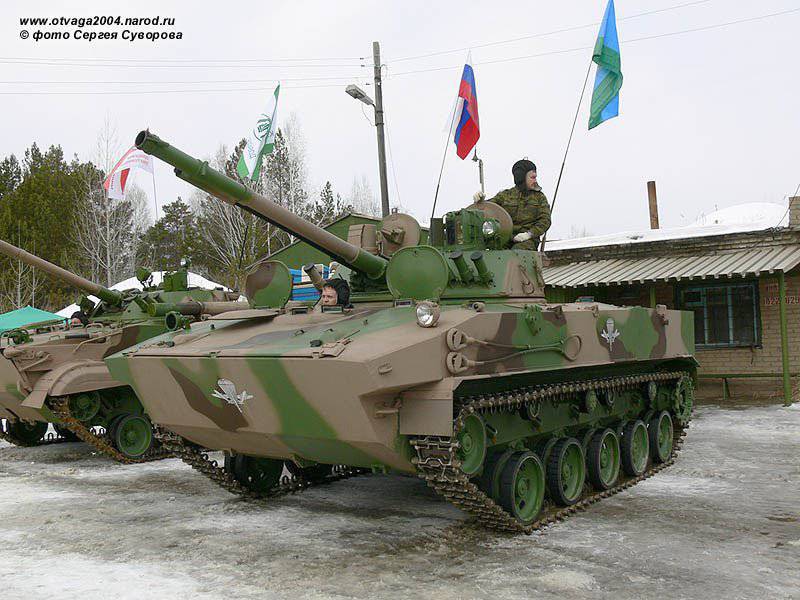
An important innovation was the introduction into the OMS of the automatic target tracking (ASC), working with both thermal imaging (gunner's sight) and television (commander's sight) channels. This is a completely new, high-tech element, which for the first time received practical implementation in the MSA of the armored weapon system. As practice shows, in combat conditions, the accuracy of pointing at the gunner-operator is reduced to six times compared with the technical characteristics of the ASC. Automatic target tracking allows you to completely eliminate the influence of the human factor on the accuracy of targeting. As a result, when firing an ATGM, the principle of “fired-forgotten” is actually implemented, since the gunner-operator is “switched off” from the process from the moment the target is captured and the ATGM is launched until it hits the target. His concern remains only an assessment of the degree of destruction of the target and the decision to transfer the fire or re-start.
With an increase in the firing range of the 100-mm OB shell to 7 kilometers, it became possible in principle to fire from closed firing positions. For the technical support of such a possibility, the GLONASS / GPS “SIC” (coordinate measurement system) was introduced into the weapon system, which allows one to accurately determine the machine’s own coordinates. After determining the coordinates of the target, the tasks of shooting and pointing weapons are solved automatically with the help of a ballistic computer and pointing drives. The gunner operator only controls the full-time work of the MSA and the armament complex on the Armed Forces of Ukraine.
Improvement of the unified combat compartment MSA is envisaged in the directions of improving the recognition of disguised targets, automatic search and capture of targets, and introduction of automated target destruction modes.
There are certain problems with the practical implementation of the new combat department in the troops. The BMD-4 was put into service in the 2004 year, in 2005-2007 the industry delivered several dozen cars to the airborne troops. Then production stopped due to lack of funds from the Ministry of Defense. Both industrialists and military know that to identify all the features and complete revision of weapons and military equipment, it is necessary to accumulate experience in operating several hundred products. While this, unfortunately not.
In our opinion, it makes sense to install a unified combat department "Bakhcha" on the BMP-3 new release, ordered by the Ministry of Defense. This will increase the combat capabilities of the machine by about 4 times. We emphasize that the cost of domestic infantry fighting vehicles in this case will be multiply lower than their foreign counterparts, and the combat capabilities are significantly higher.
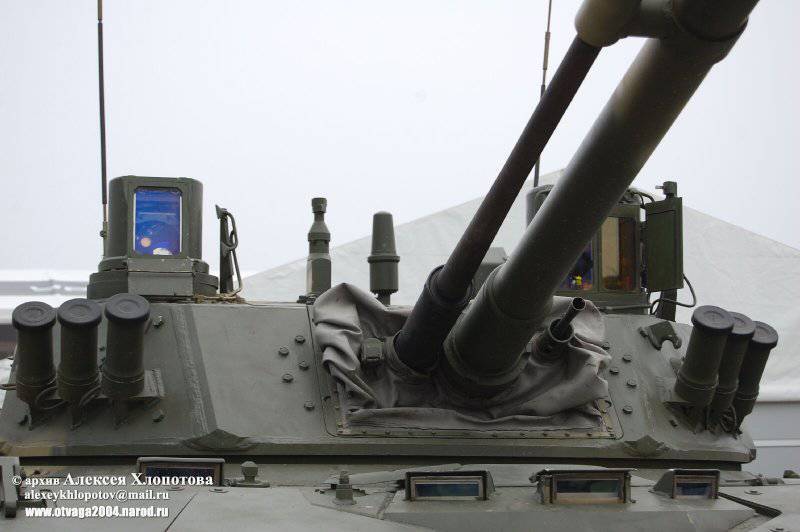
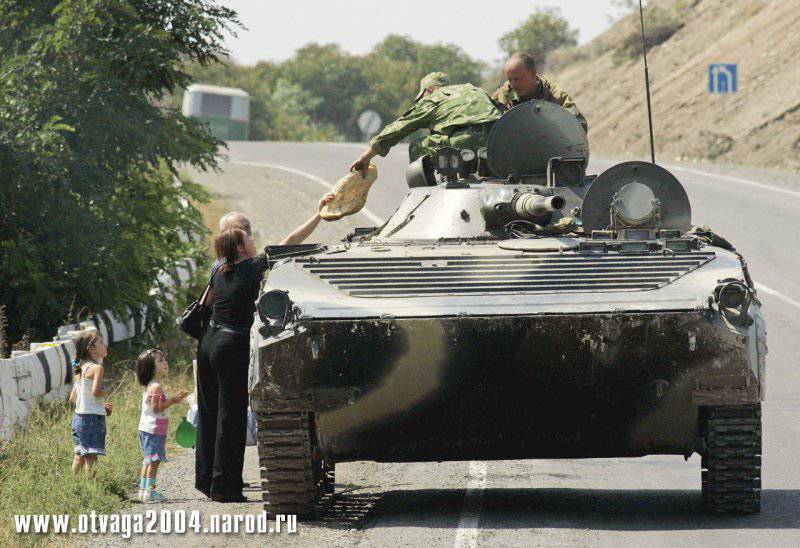
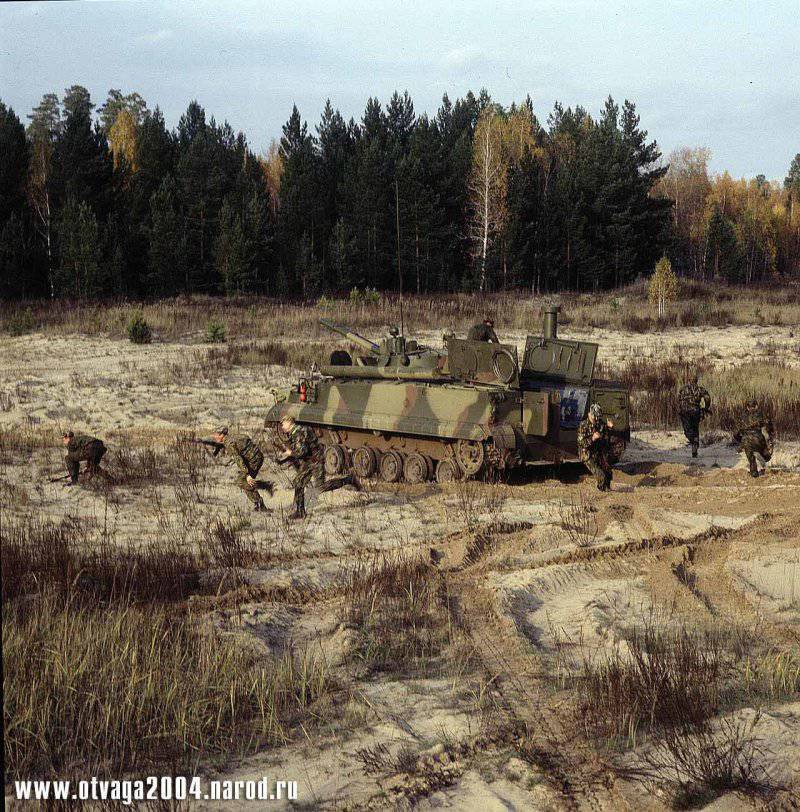

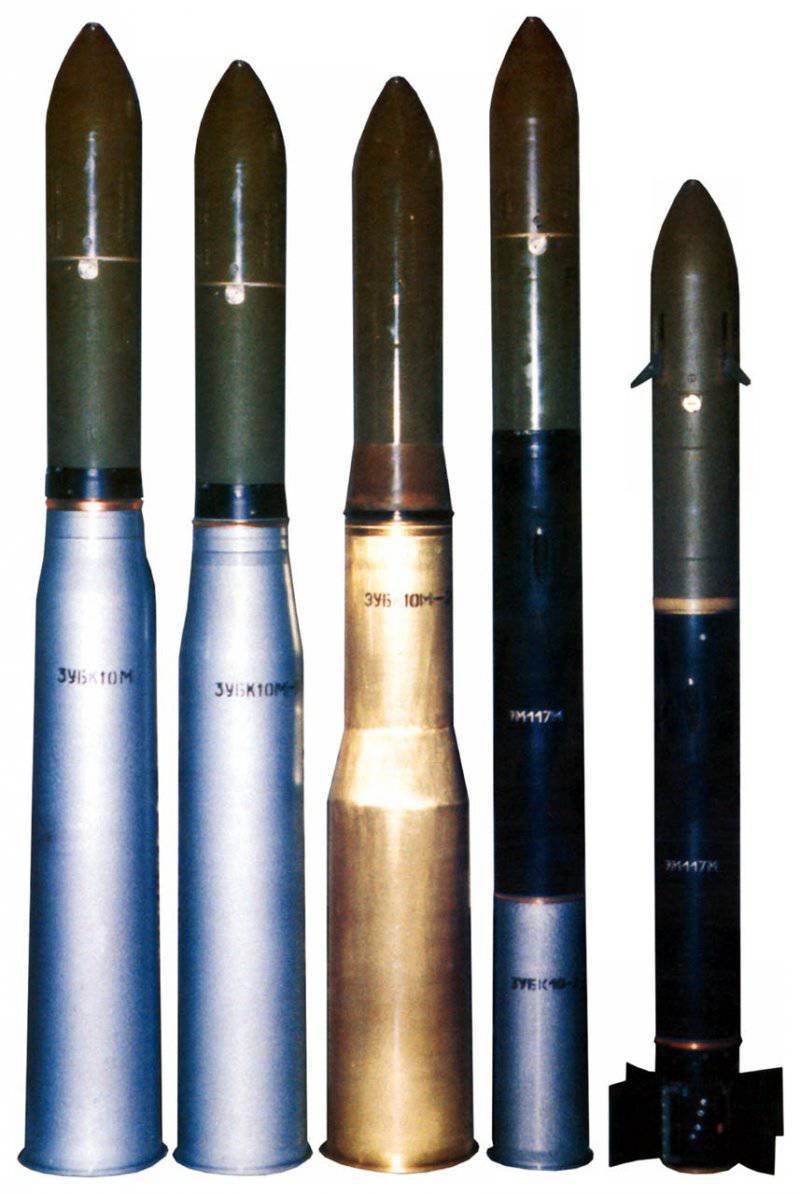
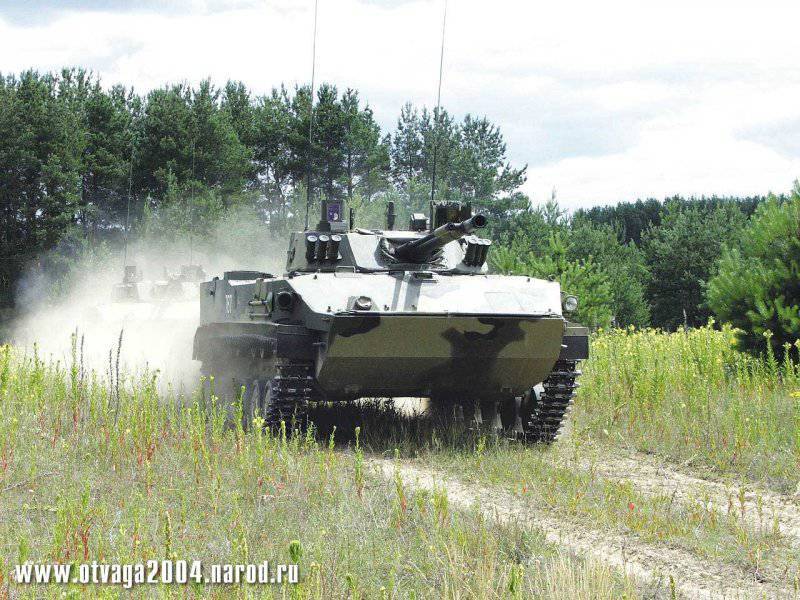
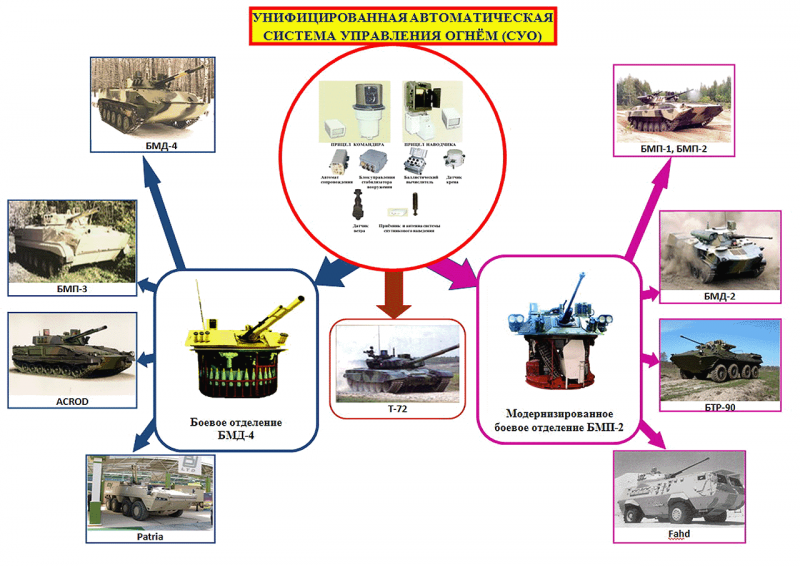
Information